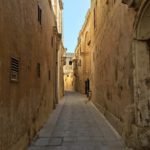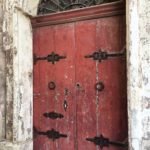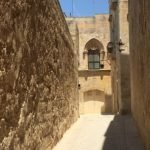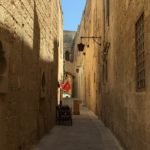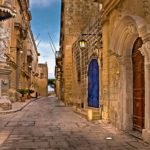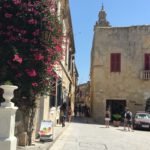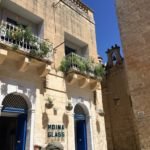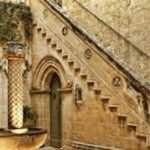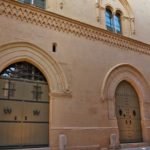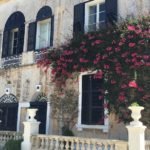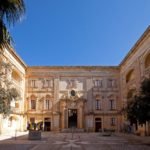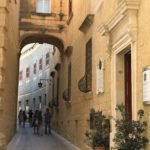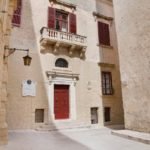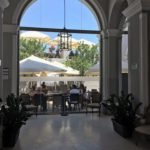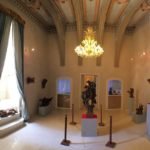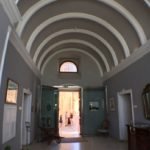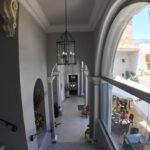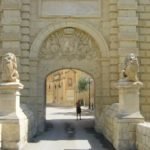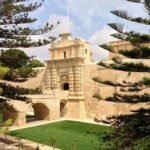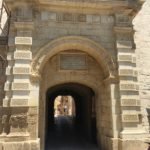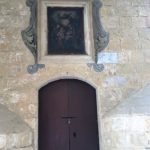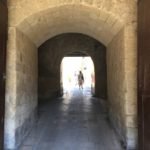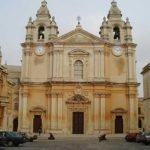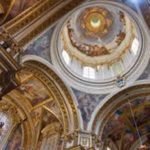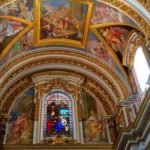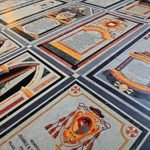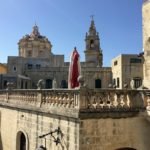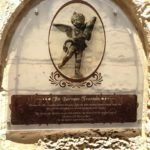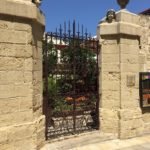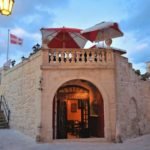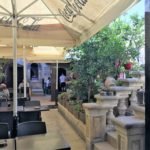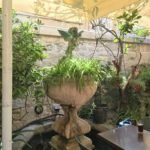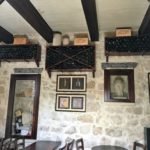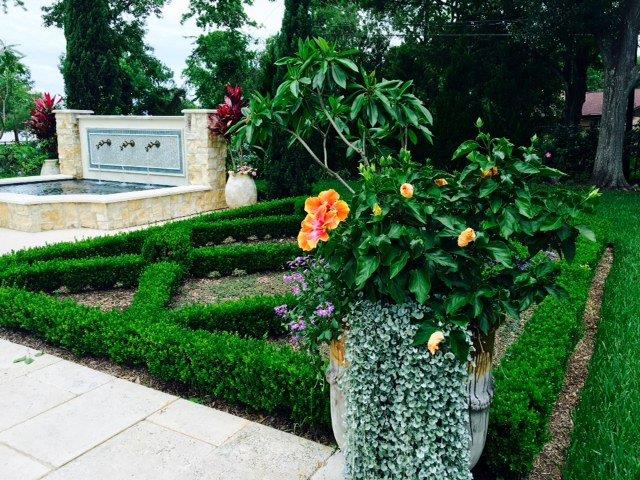My trip to Malta would not be complete without a visit to Mdina. This place holds a dear and special place in my heart. Not only because of the city’s beauty, but because it is where I went to school –elementary, middle school, and high school! So most of my teenage years and early youth was spent within the confines of these walls. Many memories of my childhood reawaken as I walk these beautiful narrow streets. All of which lead to the magnificent square and Cathedral of Malta.
Mdina is the old capital of Malta. It is located atop a high hill in the center of the island. Mdina, also known as Citta Nobile, was first inhabited around 700BC by the Phoenicians. The Normans surrounded the city with its thick defensive fortifications called bastions. This city is one of Europe’s finest examples of a walled city and its mix of medieval and baroque architecture makes it quite an enchanting place. Mdina remained Malta’s capital city until the arrival of the Knights of St. John in 1530.
Mdina is also known as the Silent City – no cars are allowed except for the cars of the 250 or so residents; the beautiful narrow streets are void of noice and chaos making this a relaxing environment to walk in. I love exploring these streets, they are filled with character and surprises—especially earlier during the morning before the tourists arrive!
Most of Malta’s noble families made Mdina their home during the 12 th century. Many remain living in this walled city even today.
This is Palazzo DePiro, my old school (intermediate and highschool). This 17 th century palazzo built by Girolamo and his son Vittorioso Cassar is nestled within the bastion walls. Originally built in 1869 for Alexander De Piro D’Amico Inguanez and his wife shortly after they were married. The palazzo was orignally three separate residences, the oldest being from the latter part of the 16 th century. It was quite marvellous growing up and coming to school in the palazzo, surrounded by history, and overlooking the bastion walls. It is now a restaurant & coffee shop, houses pieces of art and also can be rented out for special venues.
The red door pictured in the center photo above, was the main entrance to my school. A great entrance hall welcomed us promptly by 8am. Directly in front of the main doors you could sneak a peak at the garden and long for lunch break so we can play – this is now the outdoor café. To the left of the entrance hall pictured on the bottom left was one of my classrooms Form 2 – American equivalent of 7 th grade!
This is the main gate entrance to the city, it was designed by Charles Francoise de Mondion in 1724.
The back gate to the city is know as Greek Gate, because this back area of Mdina used to house a Greek community.
St. Paul’s cathedral was designed by Lorenzo Gafa, predominantly Baroque in style with some Maltese architecture. It is Malta’s national cathedral. It’s impressive façade welcomes visitors as they emerge from the narrow streets of the city onto a wonderful large piazza with an imposing Cathedral.
The interior is lavishly decorated with works from esteemed artists such as Knight Mattia Preti. The inlaid marble floors are tombstones lovingly decorated with coat of arms and Latin inscriptions for the bishops of Mdina and other members of the cathedral chapter.
My last stop is to our high school hang out, a coffee shop and bistro called Fontanella. It is situated directly next to my old school, some of us girls used to jump over the short balustrades and sneak in for a cappuccino and a little break from class. It’s time to take a rest and ponder about what we saw today and the memories coming back into this city have evoked.
I hope you enjoyed my visit down memory lane, please join me next time!
Ciao Mardel















